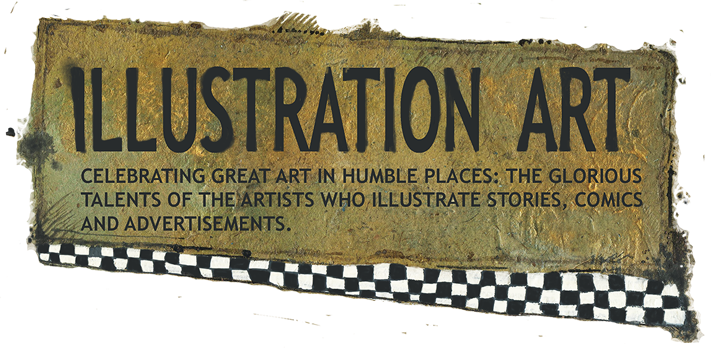"To live is to war with trolls" --Henrik Ibsen
In my view, there was no better draftsman in 20th century illustration than the great Robert Fawcett.
Some might look at this drawing for Good Housekeeping and dismiss it as "typical boring 1950's photo referenced illustration." (Oh, don't deny it-- you know who you are).
But let's take a closer look:
Up close, the drawing reveals an extraordinary array of marks on paper, from drybrush swirls to bold, virile stripes. Who could squeeze more character into brushwork than Fawcett?
Look over here and you'll see Fawcett's trees, like exploding miniature constellations:
Always, design was paramount for Fawcett. Compare his trees above with the following "fine art" painting by the famed Adolph Gottlieb, a contemporary of Fawcett's:
Here are a few more trees in the background of Fawcett's drawing, each one crackling with its own distinctive energy:
And it ain't just trees, buddy. Fawcett's opinionated brush aggressively sought out the rhythm and design in buildings, cars and other geometric shapes:
Many regard Fawcett's style as too tightly controlled for today's taste. But at the atomic level his pictures seem wilder and more abstract to me than the
work of many contemporary artists who consider themselves free because they draw loosely and don't use photographs.
For me, Fawcett is a more serious anarchist than the artist who gives himself permission to draw sloppy.
Which brings me to the "warring with trolls" portion of this post:
Much of the special character of Fawcett's picture was never seen or appreciated by the public because it was shrunk and mutilated by some clueless art director at Good Housekeeping:
To his credit, Fawcett persisted despite the fact that his work was not always understood by clients and advertisers flailing around for the latest fashion. It took Fawcett longer to achieve the kind of result he wanted, and he knew it might not be appreciated in the end, but apparently he did not find it to be a waste of time.
He held fast in the long war with trolls. For that reason alone, he deserves our respect.
(Thanks to Illustration House gallery for the use of their original Fawcett illustration.)





.jpg)














































